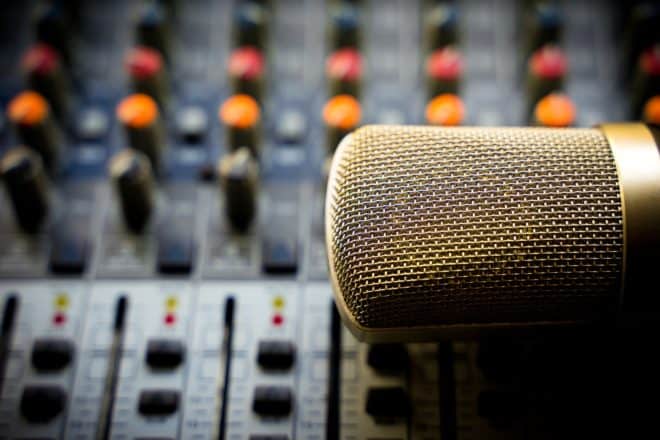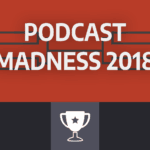How podcasts have changed in the last decade (and predictions for the future)

As podcasts have become more popular and reach that tipping point from niche media to mainstream entertainment, new devotees of podcasts will see it as a recent phenomenon that burst onto the scene. Long-time enthusiasts know the truth that the evolution of podcasts has been a slow, gradual process that began in the primordial ooze of iPods, Zune players and laptops. Today, smartphones do the heavy lifting for podcast listeners where an episode of your favorite podcast is just a few taps away.
With 90 million listeners and a $400 million ad market, podcasts have changed over the last decade. In 2009, mentioning your favorite podcast in a conversation, for example, brought a look of confusion from friends and family who then recommended a good mental health expert.
So let’s look at just five of the ways in which podcasts have changed from 2009, four years after Apple began its podcast section of iTunes.
1. Podcasts are much longer
Any long-time podcast fan can think of a current podcast show that has expanded its episode length either dramatically or gradually. For example, KCRW’s Left Right & Center political show doubled its episode length in July 2017, going from a half-hour radio show to an hour. Likewise, the long-running Slate Political Gabfest has seen its length grow over the years, now often surpassing one hour.
Even podcasts built for brevity like the Quick & Dirty Tips podcasts (Savvy Psychologist, Grammar Girl, Nutrition Diva, etc.) have increased episode lengths to sometimes exceeding 20 minutes with average episodes now averaging more than 11 minutes, 40 percent higher than 10 years ago.
So why are podcasts longer?
Today, the growth in the podcast industry is inexorably linked to the growth of smartphones, specifically the iPhone. Although the iPhone was birthed in 2007 it wasn’t until 2011 that the iPhone broke free of its AT&T exclusivity and Verizon began selling the phones. Further, it wasn’t till September 2012 that 4G LTE phones became available in large quantities and storage space on iPhones began to expand.
Before 4G and phones with greater storage space, users struggled to stream podcasts with 3G and had tough, Solomon-like decisions to make on podcast episodes to be downloaded to their phones since storage space was a valuable commodity to be hoarded. By contrast, today users can purchase 256KB phones and just have to balance downloaded podcasts with their thousands of selfies and “influencer” photos.
Before the advent of smartphones with the bandwidth and storage space to accommodate podcasts, episodes had to be played on iPods (remember them?), Zune players (Good luck with that!) and laptops and/or desktops. Those restrictions kept episodes relatively short since listeners didn’t have the “listen anywhere and anytime” utility they now have.
Finally, leading into reason # 2, podcasts used to be re-formatted radio shows, which have defined playing times, typically 15, 30 or 60 minutes.
2. Podcasts are no longer radio shows re-formatted as a podcast
Back in the dark ages of podcasts, National Public Radio (NPR) was at the forefront of converting its radio shows into podcasts. From Car Talk to Wait Wait Don’t Tell Me, NPR was able to see the promise of podcasting early on. By 2010, NPR had even packaged episodes from different radio shows under the umbrella of major topics. For example, stories that had political implications that ran on various NPR radio shows (ex. All Things Considered) were packaged under the rubric NPR politics podcast.
Local NPR stations like WBUR in Boston with Only A Game, WNYC with On The Media and KCRW with The Business and Left Right & Center all packaged these radio shows as podcasts and these radio shows remain some of the most popular podcasts among listeners.
Other radio shows like The Money Pit home improvement show have become popular and long-running podcasts. The difference today is that these radio shows are reformatted specifically for a podcast audience. Not that many years ago, radio shows were simply recorded as is for the podcast audience.
Today, most podcasts are birthed as podcasts and do not make the journey from radio show to reformatted podcasts. The growth of large podcast content companies like Gimlet and the advent of paywall podcasts as in Luminary will speed up that trend away from radio shows as ancestor of most podcasts.
3. Podcasts are more focused on their topic
This one is a bit more subtler but truly indicative of how podcasting has grown as a serious medium. When Apple first began hosting podcasts in its iTunes app, podcasting was initially dominated by people who loved the art form and were experimenting with content on this new, exciting medium. Since content alone did not initially surface as a compelling hook for podcasts, hosts and co-hosts tried to build a listener base by bonding with their audience. That meant “happy talk” at the beginning of many podcasts about weekend activities and the latest snafu at their real jobs. Some podcasts had 10 minutes of “what have you been up to” dialogue before the subject matter was broached. Of course, 10 years ago, many podcasts had no sponsors to please so it was relatively easy to make small talk.
Today, however, many podcasts have sponsors that expect the podcast to hook listeners with compelling content so that the sponsor’s ad attracts at least some of the listener’s attention. Many podcasts today are longer and are structured with segments with a different sponsor for each segment. Slate Money, for instance, has three segments and a different sponsor for each segment.
4. Podcasts are obsessed with true crime stories and politics
If podcasts are having a moment in the sun, then true crime podcasts are a supernova. Serial, from the creators of This American Life, has been one of the most popular podcasts in this genre through its three seasons. Telling one story for an entire season, host Sarah Koenig eschews guts and gore for irresistible storytelling. Success always attracts imitators or podcasts that can bring a different spin to the true crime genre. Crimetown, S-Town and Dr. Death attract plenty of listeners and true crime podcasts continue to expand faster than the actual crime rate.
The Trump Administration has also given wings to a host of political podcasts on both ends of the political spectrum. The Joe Rogan Experience has a strong listener base with his frothy, overbaked mix of in-your-face comedy, Trumpism and MMA fighting. On the other side is Pod Save America hosted by Obama staffers Jon Favreau,Jon Lovett, Dan Pfeiffer and Tommy Vietor. Even political podcasts that pre-date our polarized political fire pit like the Slate Political Gabfest and The Political Junkie have found larger listener numbers.
In 2009, by contrast, there were few political podcasts with It’s All Politics with Ken Rudin and Ron Elving on NPR the most popular and no true crime podcasts that had the eye-popping listener numbers like Serial.
5. Podcasts are now a key part of a brand strategy
The New York Times Book Review podcast began in 2006 and during its long tenure really never advertised for the New York Times as a digital subscription. Today, by contrast, The Times’s popular podcast, The Daily, regularly advertises the New York Times digital subscription as the best way to support The Daily. Clearly, the Times – along with other large media companies, have begun to link their podcast footprint to their overall brand and increase paywall participation from loyal podcast listeners.
Bloomberg now has more than 20 podcasts, including its Businessweek podcast, which can help drive subscription growth in either its digital or paper magazine.
The Wall Street Journal has more than eight podcasts –typically short-form – and they often report on stories that are covered in more depth in the publication itself.
Even the major broadcast networks like ABC, CBS, NBC and Fox have developed a roster of podcasts. ABC, for example, has more than 10 podcasts of its broadcast shows like The View or World News Tonight with David Muir, in addition to standalone podcasts like 10% Happier with Dan Harris, which attracts a strong listener base.
The Next 10 Years
What will the next decade bring for podcasts? Certainly, forecasts on most topics are wildly inaccurate (flying cars, jet packs, cure for baldness). But at the risk at being hunted down 10 years from now for these reckless and data-deprived prognostications, here goes:
1. Social media will develop tools for people to create and host podcasts right from a social media platform without specific software or a hosting platform.
2. True crime podcasts will be dwarfed by the explosive growth of climate change podcasts. Future podcasts like Humid in Halifax will report on global climate disruptions from the comfort of an air-conditioned recording booth.
3. Younger members of Congress will all begin their own regularly scheduled podcasts, while older members will still defend the string and tin can method of communication.
4. Ad-supported podcasts, listener-supported podcasts and podcasts behind a paywall will co-exist in an uneasy truce, with no format dominating the other two.
5. Live podcasts will continue to grow in number and popularity.
6. Amazon will attempt to start its own Prime Podcast Network.
7. Elon Musk will begin several podcasts simply because he can.
8. After Apple begins its own in-house podcasts, it will pre-load them on all new iPhones sold to consumers who will be unable to delete them. (Enjoy the Cooking with Tim Cook podcast).
9. Disney will also enter the podcast space, with its first podcast co-hosted by Anna and Elsa from Frozen with Olaf doing remotes from snowy locations.
10. Rotten Tomatoes will enter the podcast review space by purchasing Discover Pods..













Comments
Comments are closed.